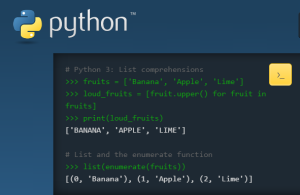Today I sat down and wrote code in python, from scratch, with intent(!), for the first time… and, it was pretty easy. After spending some time trying to alter other people’s code and feeling like I was wading through treacle, writing something from scratch allowed me to see how easy python really is.
While I’m not making any great statement about my own code architecture, diving into something complex an be an inefficient way to learn unless the code you’re looking at is designed to be followable at entry level. When you’re experienced with other languages this can be even more frustrating as it’s easy to skip over the parts you assume you know and suddenly find you’ve skipped slightly too much. Continue reading So I wrote my first Python script


